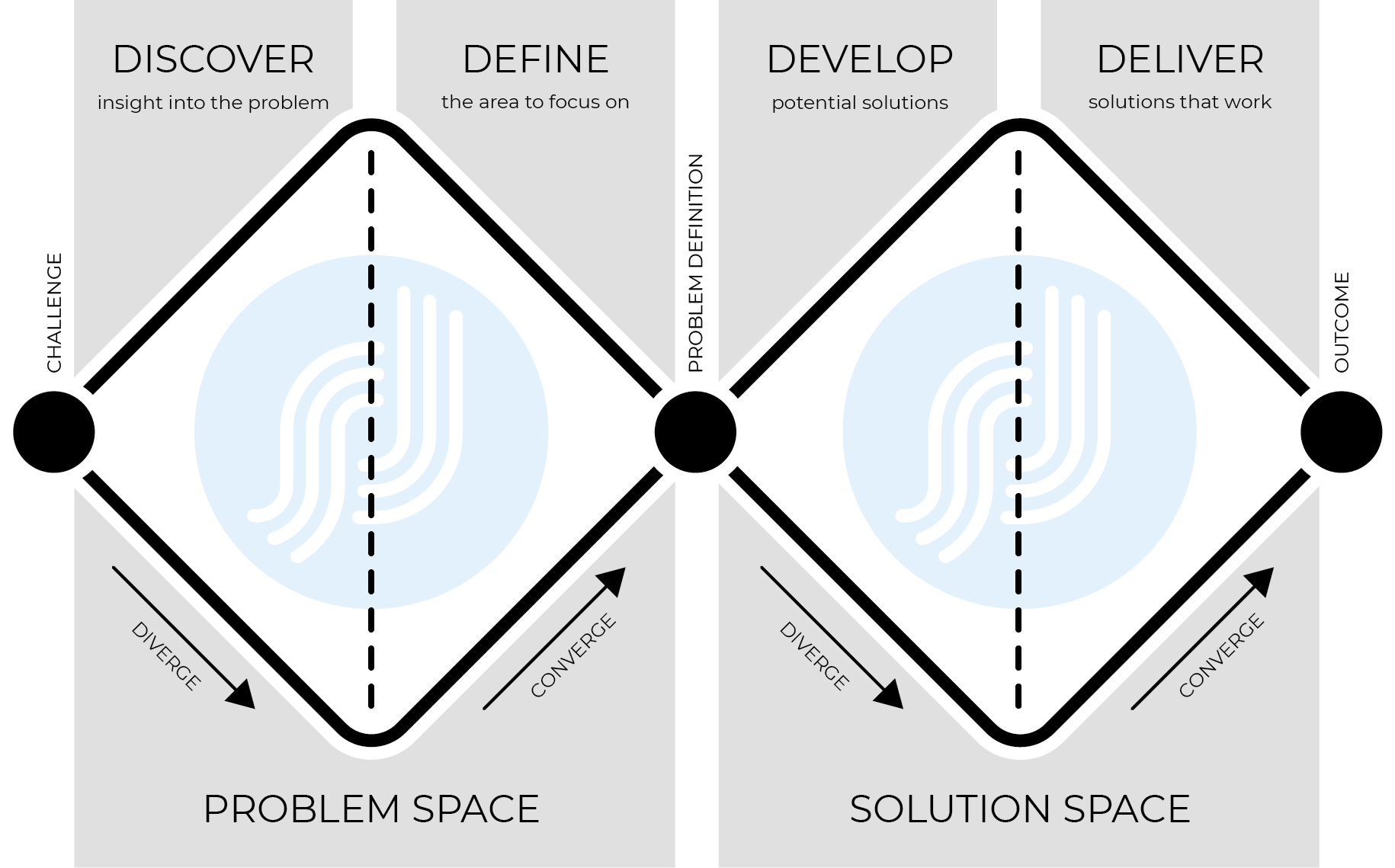The Design Double Diamond is a widely used model that visualises the design thinking process, created by the British Design Council in 2005. It’s a framework that helps to guide the design process and ensure that each stage is well thought out and executed.
The Double Diamond consists of four stages: Discover, Define, Develop, and Deliver.
- Discover:
The first stage of the Double Diamond is the discovery phase, where designers gather information about the problem and conduct research to understand the needs of the end-user. This stage is all about empathising with the user and gaining insights into their needs, behaviours and motivations. - Define:
The second stage is the definition phase, where designers take the insights gathered in the discovery phase and distill them into a clear problem statement. This stage involves synthesising the information gathered in the discovery phase and narrowing down the focus of the design challenge. - Develop:
The third stage is the development phase, where designers ideate and generate a wide range of possible solutions. This stage is all about exploring and experimenting with different concepts, using techniques like brainstorming, sketching, and prototyping. - Deliver:
The final stage is the delivery phase, where designers refine and finalise their solution and bring it to market. This stage involves testing and validating the solution, refining it based on user feedback and preparing it for launch.

The Double Diamond is a flexible framework that can be adapted to different design projects and disciplines. It’s a valuable tool for designers as it helps to ensure that they take a systematic and thoughtful approach to the design process.
In recent years, some people have challenged the two diamonds. They suggest it’s perhaps three diamonds, or even one big diamond containing lots of smaller diamonds. But as I see it, the Double Diamond conveys the idea of divergent thinking followed by convergent thinking. The first diamond says go wide on discovering all the stuff, then narrow down on defining the problem. Then, go wide with lots of ideas, before refining those ideas into one solution that works. By following the four stages of the Double Diamond, designers can create solutions that truly meet the needs of the user and deliver real value.